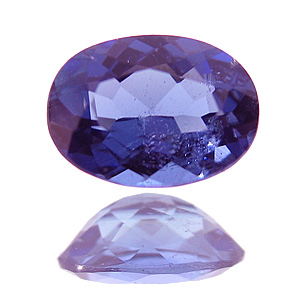The Paraïba debate
A new tourmaline discovery in Mozambique causes disputes. Is it right to call the new stones “Paraïba Tourmalines"? Read on to learn more about the current state of affairs.

Torumaline from Paraïba state, Brazil
The first discovery
In 1989 unusually lively tourmalines of truly extraordinary colour were discovered in the Brazilian state of Paraïba. These tourmalines were mineralogically classified as belonging to the Elbaite species albeit with a copper content of up to 2.3% which was found to be the cause of the exciting colours.
After the genuineness of the stones themselves as well as the natural cause of the coloration were established beyond any doubt the name “Paraïba Tourmaline” quickly took hold as a trade name which was also accepted by the CIBJO (The World Jewellery Confederation).
More discoveries
So far so good. The problems started with the discovery of more deposits of cupriferous (copper-bearing) tourmalines.
The first time this happened in the mid 1990ies in the Brazilian state of Rio Grande do Norte. Since the tourmalines from this new location looked more or less exactly like the original Paraïba Tourmalines nobody had anything against marketing them under the same brand name.
The next discovery took place in Nigeria in 2001 and caused the debate about the correct nomenclature to heat up. The problem was that the CIBJO in its definition of Paraïba Tourmaline only stated that these are cupriferous green to blue tourmalines which are commonly branded as “Paraïba Tourmalines”. It did, however, not determine whether gemstones that are branded as such actually have to be from Paraïba state.
Now the Nigerian tourmalines generally are not nearly as attractive and can easily be identified by their content of lead but they do also contain some copper and they come in green and blue colours and thus comply with the CIBJO´s guidelines. The international gem trade, never slow to jazz up cheap gems with expensive names – just think about the infamous “golden topaz” and “smokey topaz” ennobling common quartz to the more prestigious topaz – has been doing brisk business up to today. Just check with eBay and see for yourself what kinds of tourmaline sail under the Paraïba flag…
The current debate
Things got really messy last autumn when cupriferous tourmalines were found in Moçambique which in some cases could hardly be distinguished, by colour or chemically, from the original. This fact shook my reasoning to the foundations because generally I hold the opinion that trade names should be reserved for those gems they were coined for. What to do, if you cannot separate the original from the impostor and does it matter?
Take, for example, Mandarin Garnet. The name was coined for orange Spessartite from Namibia. Meanwhile the Namibian deposits are pretty much exhausted, which cannot be said, however, of the supply of Mandarin Garnets. This is so because today every orangish garnet, however brownish it may be, is termed “Mandarin”. The truth is that even the most beautiful Spessartites from Nigeria, Madagascar, Sri Lanka or wherever are no match for the Namibian gems.
The state of affairs
Things are a little different in the case of the tourmalines from Moçambique. What to do if some stones from that new deposit cannot be distinguished from those originating from Paraïba? In April the Laboratory Manual Harmonization Committee (LMHC) agreed that from then on all cupriferous Elbaites could be called Paraïba Tourmalines. Since that time the American Gem Trade Association (AGTA) in its certificates defines species as “natural elbaite tourmaline”, variety “Paraïba Tourmaline”. Below this statement one reads “origin: not determined” and the comments “The variety name Paraïba is derived from the locality in Brazil where it was first mined. Its geographical origin has not been determined and therefore could be from Brazil, Mozambique, Nigeria or another locality.” Only if the origin can be established beyond any doubt and only upon the clients demand the appropriate origin is given and the comments are omitted.
What now?
Being the purist that I am when it comes to nomenclature I grudgingly acknowledge this decision. I am afraid, though, that it will only lead to more lengthy discussions because here an appellation of origin with which a certain quality of colour is associated the world over, has been made into a variety name. May every ruby of typical Burma colour now rightly be called a Burma Ruby even if it is from Vietnam or Tajikistan? I want to point out that the value of a gemstone is not only determined by its colour, clarity, carats and cut but also by its rarity. Just think about Habachtal Emeralds or Cashmere Sapphires.
What do you think?
 Deutsch
Deutsch